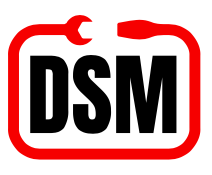Description
The MAX7219 4-in-1 8x8 LED Dot Matrix Display Module is a versatile component that provides a high-resolution, customizable display for various Arduino projects. This module incorporates four individual 8x8 LED dot matrix displays, each driven by a MAX7219 integrated circuit. It offers a convenient and efficient way to create animations, text displays, and other visual effects.
Key Features
- Four 8x8 LED Dot Matrices: Provides a large display area for intricate graphics and text.
- MAX7219 Driver: Ensures precise control over each LED segment.
- Serial Interface: Communicates with the Arduino using a simple 3-wire interface (DIN, CLK, CS).
- Cascadable: Multiple modules can be connected in series for even larger displays.
- Customizable Brightness: Adjusts the brightness of the LEDs to suit different lighting conditions.
- Low Power Consumption: Efficiently manages power consumption for extended battery life.
Applications
- Digital Clocks and Timers: Display time, date, and other time-related information.
- Gaming and Entertainment: Create interactive games, animations, and scrolling text effects.
- Message Boards and Signs: Display dynamic messages, announcements, or advertisements.
- Data Visualization: Represent numerical data or sensor readings visually.
- Educational Projects: Teach programming concepts and electronics principles.
DATA SHEET AND USECASE
Using the MAX7219 4-in-1 LED Dot Matrix Display Module with Arduino:
To interface this module with an Arduino, follow these general steps:
Connections:
- Connect the VCC and GND pins of the module to the 5V and GND pins of the Arduino, respectively.
- Connect the DIN (Data In), CS (Chip Select), and CLK (Clock) pins of the module to digital pins on the Arduino (e.g., 11, 10, and 13, respectively).
Libraries:
- Install the Led Control library, which simplifies communication with the MAX7219.
- Alternatively, for advanced functionalities, the MD_Parola and MD_MAX72XX libraries can be used.
Programming:
- Initialize the library with the appropriate pin connections.
- Use library functions to control individual LEDs, display characters, or create scrolling text.
Applications:
This module is commonly used in:
- Digital clocks and timers
- Scrolling message displays
- Electronic name badges
- Game scoreboards
- Interactive art installations




